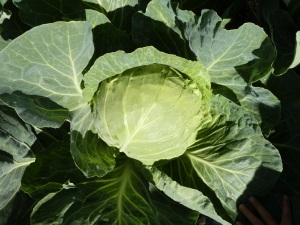 So why is it necessary to rotate the crops in your garden? Simply, it will help slow down or stop the spread of diseases and pests in your garden, and improve the soil of your garden. Pests and diseases usually attack plants of the same family, and can linger in the soil to pop up again the next year or two. So by proper planning and rotation with plants of different families then you can help prevent the survival of those pests and diseases from year to year.
So why is it necessary to rotate the crops in your garden? Simply, it will help slow down or stop the spread of diseases and pests in your garden, and improve the soil of your garden. Pests and diseases usually attack plants of the same family, and can linger in the soil to pop up again the next year or two. So by proper planning and rotation with plants of different families then you can help prevent the survival of those pests and diseases from year to year.Different plants add or take away different nutrients from the soil, so by rotating your plants, then you can take full advantage of the benefits the plants provide to the soil. Beans and peas for example add in nitrogen to the soil. Cabbage and leafy plants planted there the next year, would greatly benefit from the addition of the nitrogen. But planting potatoes one year in a bed, then tomatoes the next might cause disease or pests to over run your garden as they come from the same plant family.
Another thing to consider when planing out your vegetable garden is to realize that not all plants will grow well together or complement each other. A good resource to find what vegetables go well with each other, and what dose not like to grow next to another is a book called The Vegetable Gardener's Bible. He has put together an easy to follow guide on what plants to plant with each other to get the most benefit.
However, it still ends up being a big job to figure out rotation every year. And to remember which plant belongs to what family. The easiest way I know, is to use the garden planner, as it has a built in feature to help you rotate from year to year.
Here is a great video talking about crop rotation!
[youtube http://www.youtube.com/watch?v=XeNA6XdMoF8]
As always, Happy Planning!
No comments:
Post a Comment